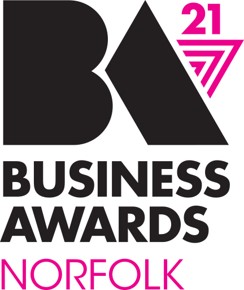About Us
- Independent energy consultancy
- Based in the heart of Norwich
- Award winning service
- Trustworthy advice
As part of our dedication to making energy easier to understand, we’ve created this handy ‘Jargon Buster’ to help you navigate your way through the confusing energy sector. You may recognise some of these terms and acronyms from your bills, invoices and other documents you get sent.
We’ve selected some of the most common terms but if you feel we have missed any, please get in touch and let us know as we would be happy to add them for you. Send us an email hello@indigoswan.co.uk to discuss.
| Actual Read | Where a Meter Read has been provided to the Energy Supplier by the customer |
|---|---|
| AMR – Automatic Meter Reading | Meters that send a monthly Actual read to the Energy Supplier |
| AQ – Annual Quantity | The Estimated Annual Consumption for Gas Meters. Used for pricing energy contracts and billing |
| ASC – Available Supply Capacity | The amount of KVA that a Half Hourly Meter is authorised to receive by the regional network |
| Balancing and Settlement | Charges that are collected from end users and paid to suppliers and generators to make sure the network has a balanced electricity supply |
| CCL – Climate Change Levy | A government-imposed tax to reduce greenhouse gas emissions and increase energy efficiency. It is paid on Electricity and Gas consumption above a certain threshold, and there are exemptions |
| CED – Contract End Date | Day your contract ends |
| CfD – Contracts for Difference | CfDs incentivise investment in renewable energy by providing developers of large-scale projects with a guaranteed fixed price regardless of the wholesale cost. It replaced the Renewables Obligation in 2017 |
| CM – Capacity Market | A mechanism introduced by the Government to ensure that Electricity supply continues to meet demand as more volatile and unpredictable renewable generation plants come on stream |
| COP – Codes of Practice | Details for the technical specification of an Electricity meter. Determined by the Available Supply Capacity and is confirmed at the time the meter is first registered (e.g. COP5, COP10) |
| COT – Change of Tenancy COO – Change of Occupancy COMA – Change of Managing Agent | The request made to the Energy Supplier to change the party responsible for paying energy invoices. This brings the previous contract to an end and a new contract can be negotiated |
| CV – Calorific Value | Part of the calculation to determine Gas consumption, based on the amount of heat generated from its combustion |
| DA/DC – Data Aggregator / Data Collector | The company/s responsible for communicating the consumption data from a Meter to a Supplier |
| Daily Metered | A large usage Gas meter that has a data logger fitted to record, store and transmit daily readings and measurements |
| DNO – Distribution Network Operators | Regional companies that deliver Gas and Electricity into our homes and businesses |
| DSR – Demand Side Response | An arrangement where payments are made to consumers to alter their energy consumption. This is at the request of National Grid |
| DUOS – Distribution Use of System Charges | Charges that are collected by the Supplier and returned to the DNO to cover Distribution costs |
| EAC – Estimated Annual Consumption | The estimated total usage for Electricity meters. Used for pricing energy contracts and billing |
| Energy Suppliers | The company who provides energy contracts / billing / customer services etc. |
| Estimated Read | A “best guess” Meter Read by the Supplier based on historical consumption patterns |
| Excess ASC | The amount of KVA used above your authorised level. Penalty charges apply |
| FiT – Feed in Tariff | A payment made to homes and businesses generating their own Electricity using small-scale renewables generation. The scheme closed in April 2019 and was essentially replaced by the Smart Export Guarantee |
| Fixed Costs | Pre-determined charges that the Energy Supplier sets to cover costs for the duration of the contract |
| Fixed Price Contract | The majority or all costs are confirmed for the duration of the contract term on a given day. Rates do not change so it is great for budget certainty |
| Generators / Producers | Provide the Gas and Electricity through the pipes and wires |
| GWh | 1,000,000 kWh |
| Green Energy | Clean energy from sources that only emit little or no greenhouse gases and have a low environmental impact. E.g. solar or wind |
| HH Meters | Meters where the consumption data is recorded every 30 minutes (Half Hourly = HH) |
| HHD – Half Hourly Data | The kWh consumption of Electricity recorded in each Half Hour interval over a 24-hour period. Suppliers ideally need 12 months of HHD to provide an Electricity quote |
| Interconnectors | Physical pipes and wires between the UK and Europe to transport Gas and Electricity |
| KVA – Kilovolt - ampere | The unit of energy used to measure the use of Available Capacity |
| kWh – Kilowatt Hour | This is the unit of energy to measure consumption |
| LNG – Liquified Natural Gas | Gas which is converted to a liquid in order for it to be easily sent on tankers around the world, unloaded and converted back into a Gas |
| LOA – Letter of Authority | This is a signed permission slip which allows us to deal with your account on your behalf |
| Losses | The Electricity or Gas lost through by transportation through the Transmission and Distribution networks |
| MAM – Meter Asset Manager | The company that owns and maintains the Gas meter |
| Maximum Demand | The highest amount of KVA used by a meter at a single point in time |
| MOP – Meter Operator | The company that owns and maintains the Electricity meter |
| MPAN – Meter Point Administration Number | The industry’s reference for an Electricity meter’s location. Does not change when meters are changed. Not visible on the actual meter |
| MPR – Meter Point Reference | The industry’s reference for a Gas meter’s location. Does not change when meters are changed. Not visible on the actual meter |
| MSN – Meter Serial Number | The unique reference for each meter. Visible on the actual meter |
| MWh | 1,000 kWh |
| National Grid | Company responsible for transporting Gas and Electricity around the UK |
| NHH Meters | A meter where the reading is manually recorded and sent to the Electricity Supplier |
| Non Daily Metered | The traditional type of Gas meter where manual meter readings are required to be sent to the Gas Supplier |
| OFGEM – Office of Gas and Electricity Markets | Government quango who manage all areas of the Energy Sector including the Retail Market, Wholesale Market, Transmission Network, Distribution Network, Legislation and Licensing |
| P/kWh | This is the unit cost that energy is priced on Electricity and Gas Contracts |
| Pass Through Charges | Where the costs are not Fixed for the duration of the contract. Suppliers have the right to reconcile costs after they have been billed themselves by the relevant party (e.g. the DNO) |
| Power Factor | The efficiency of an electrical system by comparing the Real Power to the Apparent Power. Relevant for businesses using heating & cooling systems, pumps & fans and industrial machinery |
| Reactive Power Charge | An additional charge by the Electricity Network in instances where there is inefficiency on site, resulting in wasted Electricity |
| Renewable Energy | Energy generated from sustainable, non fossil fuel sources but potentially emit greenhouse gases. Can include solar and wind, but also include biomass and biodiesel |
| RO – Renewables Obligation | A government scheme designed to encourage large-scale generation of Electricity from eligible renewable sources. Closed to new applicants in 2017 with payments to existing generators ceasing in 2037 |
| Smart Export Guarantee | Newly introduced scheme in 2020 which will require Electricity Suppliers to pay small-scale low-carbon Electricity generators for each kWh they generate |
| Smart Meters | Meters that accurately record your usage and can communicate with a smart meter display to show you consumption and cost in real-time |
| SMETS1 | Smart Meters installed before the purpose-built communication network was rolled-out. Service issues often recorded when moving from one Supplier to another |
| SMETS2 | An improved Smart Meter that communicates with the communication network, which means the Smart functionality remains even if the Supplier changes |
| SOQ – Supply Offtake Quantity | The maximum daily consumption for a Daily Metered Gas supply |
| Standing Charge | The daily charge you pay your supplier to cover some of their Fixed Costs |
| Sub Metering | Metering installed to monitor energy consumption, typically for energy management or to apportion costs. Sub Meters can be installed on specific pieces of equipment or specific electrical circuits within a building |
| Termination Notice | An Energy Supplier’s stated period where formal notice should be served to end a contract arrangement. Typically, 30 to 90 days |
| Third Party Costs | The additional charges that make up the delivered cost of energy, excluding the Wholesale Cost. Suppliers collect the charges from end users and pay them to the relevant party (e.g. the network operator) |
| TNUOS – Transmission Network Use of System | Charges that are collected by the Supplier and returned to the Transmission System Operator to cover the Transmission costs |
| Transmission Network | The pipes and wires to move Gas and Electricity over long distances to the regional networks |
| TSO – Transmission System Operator | The organisation responsible for moving Gas and Electricity around the national Transmission Network |
| Triad | The mechanism in place to pay for the Transmission network. It is calculated using the 3 peak points of consumption between November and February each year |
| Unidentified Gas | This is Gas left in the system that cannot be linked to an end user. The cost of paying for this Gas is shouldered by every other Gas user |
| Volume Tolerance | A contractual arrangement for the consumption allowed, below and above the contracted volume, often expressed as a %. Typically, 80%-120% |
| Wholesale Cost | The cost of purchasing the Gas and Electricity on the traded commodity markets |
In case the answer you are looking for isn’t here, we also have a list of ‘frequently asked questions’ on our website we hope you will find useful.

How we do anything is how we do everything
Everyone’s experience of Indigo Swan should be the same – exceptional. This value is about delivering quality, thoughtful work every time, no matter how big or small the task is. Every piece of work will be given our full attention.

UNFLINCHING COMMITMENT TO FINDING A BETTER WAY
We’ve always been ambassadors for innovation and creativity, and it’s what sets us apart. Our Swans are intelligent, inventive and brave and we will always listen to ideas on how to make our company even better. We won’t be limited by what we currently know and do, and when seeking solutions to our challenges we’ll forget ‘what is’ and embrace ‘what if’.

HAPPINESS FIRST
We’re reversing the equation: happiness leads to success. We promote wellbeing and advocate positivity. We want to create an atmosphere where everybody can thrive. Kind gestures, excellent work and enthusiasm for doing good business won’t go unnoticed.

WE CELEBRATE INDIVIDUALITY
We recognise each Swan for their own amazing qualities and character, and acknowledge that this diversity contributes to our culture, which we cherish. As a company, we’re 100% independent from supplier-imposed targets, so we’ll never encourage our clients into making decisions that are anything less than what’s best for them.
Winner - Best Customer Service - (SME)
Finalist - Do The Right Thing
Finalist - Net Zero Hero
Finalist - Net Zero Leaders
Finalist - Best Company to Work For
Finalist - Industry Expert
Finalist - Best Customer Service - Large Customers
Finalist - Most Trusted Consultancy - Large Customers
Finalist - Most Trusted Consultancy - (SME)
Finalist - Consultancy of the Year - (SME)
Finalist - Consultancy of the Year - Large Customers

Highly Commended - Third Party Intermediary of the Year

Winner - Best Professional Services Organisation
Winner - Most Trusted Consultancy (SME)
Finalist - Do The Right Thing
Finalist - Net Zero Hero
Finalist - Net Zero Leaders
Finalist - Best Business Solution - Renewables
Finalist - Wellbeing & Diversity
Finalist - Best Customer Service - Large Customers
Finalist - Most Trusted Consultancy - Large Customers
Finalist - Best Customer Service - SME
Finalist - Consultancy of the Year - SME
Finalist - Consultancy of the Year - Large Customers
Winner - Consultancy of the Year (SME)
Winner - Best Customer Service (SME)
Finalist - Best Business Solution - Renewables
Finalist - Most Trusted Consultancy - (SME)

Finalist - Disruptor of the Year
Finalist - Business Person of the Year
Winner - Customer Service (SME)

Winner - Customer Care

National Runner-up - Workplace Wellbeing

Winner 2019

Regional Winner - Workplace Wellbeing
Winner - Most Trusted Consultancy (SME) - 2019
Finalist - Consultancy of the Year (UK) - 2019
Finalist - Best Customer Service (SME) - 2019
Finalist - Industry Expert (Aimee Konieczny) - 2019
Finalist - Secret Star (Simon Rolfe) - 2019

Bronze - Best Company to Work For
We are accredited until 2021.
Winner - Secret Star (Rae Harris) - 2018
Winner - Consultancy of the Year (East) - 2018
Finalist - Consultancy of the Year (UK) - 2018
Finalist - Most Trusted Consultancy - 2018
Finalist - Awesome Place to Work - 2018

Winner 2018
Winner - Most Trusted Consultancy - 2017
Winner - Consultancy of the Year (East) - 2017
Finalist - Inspirational Leader - 2017
Winner - UK's Energy Service Firm of the Year - 2017
Winner - UK's Energy Service Firm of the Year - 2016
Finalist - 3rd Party Intermediary of the Year - 2016
Winner - Consultancy of the Year - 2016
Winner - Unsung Hero - 2016
Finalist - Most Trusted - 2016
Finalist - Business Person of the Year - 2016
We have been accredited since 2016.
Winner - Best Small Consultancy (UK) - 2015
Winner - Best Small Consultancy (East) - 2015
Winner - Most Trusted Consultancy - 2015
Finalist - Best Customer Service - 2015
Class of 2015
Young Director of the Year - 2015
Winner - I&C Most Innovative - 2014
Finalist - SME Most Innovative - 2014
Finalist - SME Most Trusted - 2014
We have been accredited since 2012.
We have been accredited since 2010.